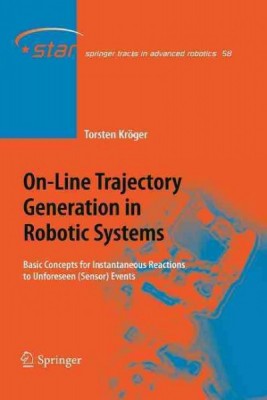| On-Line Trajectory Generation in Robotic Systems: Basic Concepts for Instantaneous Reactions to Unforeseen (Sensor) Events 2010 Edition Contributor(s): Kröger, Torsten (Author) |
|
 |
ISBN: 3642262295 ISBN-13: 9783642262296 Publisher: Springer OUR PRICE: $161.49 Product Type: Paperback - Other Formats Published: May 2012 |
| Additional Information |
| BISAC Categories: - Computers | Intelligence (ai) & Semantics - Technology & Engineering | Robotics - Science | System Theory |
| Dewey: 006.3 |
| Series: Springer Tracts in Advanced Robotics |
| Physical Information: 0.6" H x 6" W x 9.1" (0.80 lbs) 232 pages |
| Descriptions, Reviews, Etc. |
| Publisher Description: By the dawn of the new millennium, robotics has undergone a major tra- formation in scope and dimensions. This expansion has been brought about bythematurityofthe?eldandtheadvancesinitsrelatedtechnologies.From a largely dominant industrial focus, robotics has been rapidly expanding into the challenges of the human world. The new generation of robots is expected to safely and dependably co-habitat with humans in homes, workplaces, and communities, providingsupportinservices, entertainment, education, heal- care, manufacturing, and assistance. Beyond its impact on physical robots, the body of knowledge robotics has produced is revealing a much wider range of applications reaching across - verse research areas and scienti?c disciplines, such as: biomechanics, haptics, neurosciences, virtual simulation, animation, surgery, and sensor networks among others. In return, the challenges of the new emerging areas are pr- ing an abundant source of stimulation and insights for the ?eld of robotics. It is indeed at the intersection of disciplines that the most striking advances happen. The goal of the series of Springer Tracts in Advanced Robotics (STAR) is to bring, in a timely fashion, the latest advances and developments in robotics on the basis of their signi?cance and quality. It is our hope that the wider dissemination of research developments will stimulate more exchanges and collaborations among the research community and contribute to further advancement of this rapidly growing ?eld. |